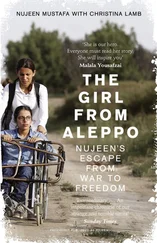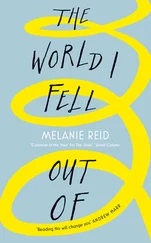‘I got really frustrated and mad,’ said Amerine. ‘We had no trucks of our own, and I’d been warned by one of the CIA guys to make sure we took the car keys from the guerrillas, but I hadn’t done that.’ The Americans had no choice but to jump in the fleeing trucks. ‘It felt like we were stealing defeat from the jaws of victory,’ he recalled. ‘In that moment we lost Tarin Kowt. People would be slaughtered, and there wasn’t anything I could do. I even thought about shooting one of the drivers to take a truck, but if I shot one of our guerrillas they’d never trust us.’
Amerine thought they would just have to grab Karzai from the town and leave. However, when they got back and told him what had happened, Karzai managed to get them two trucks and they drove back. There was not enough time to return to the bluff, but they got to the edge of town and started calling in airstrikes, having figured out that the Taliban were advancing along three paths from the valley in a three-pronged attack.
Word went out at US Central Command that a lone team of Green Berets was under attack from hundreds of Taliban, and F14s and F18s were scrambled from all over the country. ‘Every available US aircraft with bombs was in Tarin Kowt to help us,’ said Amerine. ‘It was this incredible feeling that the might of the military was coming to assist. They knew that our lives were pretty much in their hands.’
One of the pilots looked down from overhead and radioed, ‘Where are the friendly forces?’
‘OK, so see the two trucks …’ replied Amerine.
‘That’s it?’ the pilot asked incredulously.
Despite the massive display of air power the bombs could not wipe out all the Taliban, and some made it into town. ‘What really pushed it over the edge was the people of the town came out with guns,’ said Amerine. ‘At first we were shooing them away, but then we realised they were actually there to fight with us. We killed hundreds of Taliban that day.’
With Tarin Kowt won, over the next three weeks Amerine’s team began moving south towards Kandahar, which was still firmly in Taliban hands. They set up a headquarters on the way at a place called Damana. From there, on 3 December they launched an attack to capture the town of Shawali Kowt and its hill, which overlooked a vital bridge over the Argandab River towards Kandahar. There was intense fighting, and the Taliban counterattacked. One of Amerine’s men, Wes, was shot in the neck though luckily the bullet missed an artery. Eventually the Americans fought them off, and by the next day had taken the hill, giving them control of the bridge.
Yet when Amerine radioed the news to his headquarters, he was ordered to give up the hill. ‘It was a complete foul-up,’ he said. ‘We’d had two days of fighting and no sleep at all. I was very angry.’ The Afghans with them were baffled as they retreated, and with no interpreter it was impossible for Amerine to explain.
‘What seems to have happened is that up till then in the war there were no American casualties in battle [just one from an accidental airstrike in the north],’ he said. ‘At that point fighting up front with the guerrillas wasn’t the norm. So when I radioed that one of my men was shot, there was this shock – “What are your men doing, putting themselves in harm’s way?” I think someone at some level thought there must be a safe area we could be operating from, but they didn’t understand – sorry, we are behind enemy lines, and the guerrillas won’t fight unless we are up front.’
The next day they were ordered to retake the hill, which they did, christening it the Alamo.
While Amerine and Karzai were battling it out with the Taliban in southern Afghanistan, 3,000 miles away in Bonn a group of twenty-five Afghans were huddled in a castle on a wooded hill overlooking the Rhine, trying to form a government. Chairing the meeting was Lakhdar Brahimi, the veteran diplomat and former Algerian Foreign Minister who was the United Nations’ Special Envoy for Afghanistan. He had thought the Taliban would hold on till spring, but then cities started falling like dominoes – Mazar-i-Sharif, Kabul, Herat – so the Northern Alliance controlled more than half the country. This would not have been acceptable to Afghanistan’s Pashtun majority, or indeed its neighbour Pakistan, so there was a sudden rush to come up with a more representative interim administration before it was too late.
The White House wanted to do this at Bagram airbase, but Brahimi insisted it needed to be neutral territory. The Germans offered their official guesthouse, the Petersberg Hotel, a site laden with history. It was there in 1949 that the three occupying powers, Britain, France and the US, had signed the agreement paving the way to the birth of the German Federal Republic.
The aim of the Bonn Conference was to form an interim administration which would run the country for three to six months until a loya jirga , a traditional gathering of elders, could be held to decide Afghanistan’s future. There were four delegations – the main ones being the Northern Alliance (including representatives from General Dostum and Ismael Khan) and the Rome group (royalists loyal to the ex-king, Zahir Shah, to which Karzai belonged), then two smaller groups: the Cyprus group (intellectuals thought to have ties with Iran) and the Peshawar group (including the powerful Gilani family). No Taliban were invited, for this was a conference of victors – something that would be rued later. Most of the Afghans were dressed in suits, and aside from the Northern Alliance, many were émigrés, well-educated and Westernised. One of the few in a turban was Pacha Khan Zadran, a warlord. The meeting was opened on 27 November by German Foreign Minister Joschka Fischer, and tasked with producing a government within a week. That was the deadline because the hotel was then booked for a conference of dentists.
Even without the Taliban, getting an agreement was no easy task. The Northern Alliance felt that they should run the country having taken Kabul, and they resented being outnumbered in Bonn. In fact back in Kabul, their leader, Professor Rabbani, had already moved into the presidential palace. The Pashtuns, as Afghanistan’s majority tribe, insisted they should run the government, and were highly suspicious of the Northern Alliance.
As usual in Afghanistan, the situation was complicated by outside interests. Also present in the hotel, though not inside the conference room, were a number of international observers from countries in the region or involved in the conflict, including the US, the UK, Iran, Russia, India, Pakistan, Saudi Arabia and Turkey. The atmosphere was not helped by the fact the meeting was being held during Ramadan, the holy month of fasting, during which Muslims cannot eat in the hours of daylight.
The Americans had sent James Dobbins, a former US Ambassador who had been appointed envoy to the Afghan resistance. A veteran of international conferences that were fuelled by fine food and plentiful wine, Dobbins wondered how this one would work with everyone sober, hungry and tired. Before reaching Bonn he had travelled to Tampa, Florida, to meet General Franks, and had heard the name Hamid Karzai for the first time. ‘They said we’ve got him in a helicopter – he’d been overrun by Taliban and was being flown out to Pakistan. They didn’t want another Abdul Haq incident.’3
A few days later in Islamabad Dobbins met the head of ISI, General Ehsan ul Haq, who was the first to suggest Karzai to him as future leader. ‘He wasn’t an American candidate,’ said Dobbins. ‘But then I went to Kabul, and Abdullah Abdullah also suggested him. I thought, gee, if ISI and the Northern Alliance are agreed, he must be something.’ In Bonn he found the Russians, Indians and Iran all suggested Karzai. ‘There was a clear consensus among international observers that he was the most broadly acceptable.’
Читать дальше












